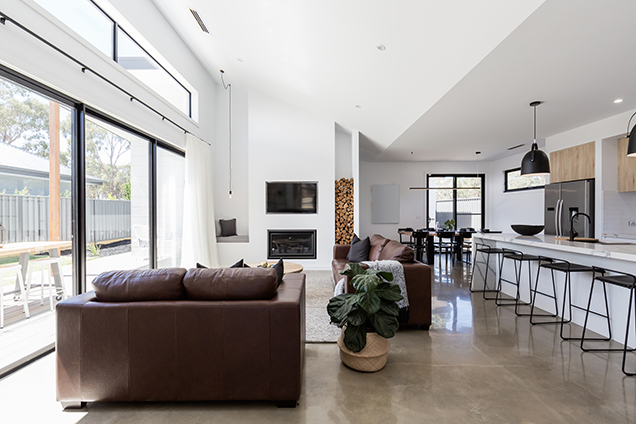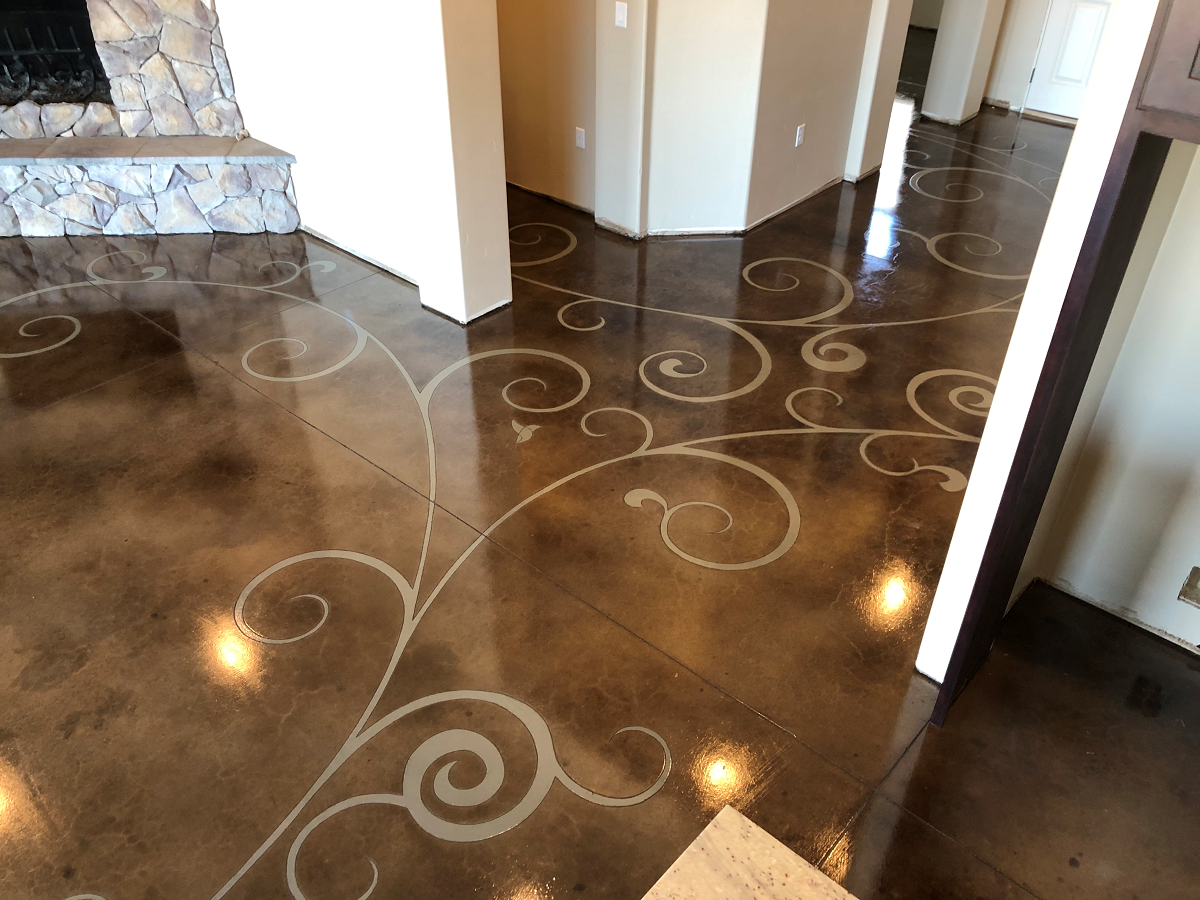Decorative Concrete for Interior Floors
Have you considered decorative concrete for your interior floors?
When you think of concrete floors, cold grey basement slabs probably come to mind — not something that brings a unique, beautiful look to your living areas. While there are some special considerations for internal use, concrete floors can be a utilitarian and gorgeous option in a home or business.*
When to install concrete in a building
Admittedly, concrete doesn’t work in all buildings. If a home has no existing concrete slab, then installing a new concrete floor is not a practical option. Concrete works best when pouring a fresh slab or adapting an existing slab. Sometimes, it may be possible to pour an overlay over a subfloor, but this generally requires careful structural reinforcement due to its heavy weight.
Pros of a concrete floor
- Durable: Concrete’s hardness and strength means that it’s not easily damaged. That’s why it’s used for driveways and roads! It can withstand pets, spills, high heels, heavy furniture, and dropped items. When properly installed and maintained, it will last for years.
- Easy to maintain: When properly sealed, concrete is easy to clean and requires only a quick sweep and damp mopping. Experts do often recommend resealing your concrete on a regular basis although the frequency depends on usage and climate.
- Ability to add radiant heat: Concrete can be cold underfoot but radiant heat can easily be added underneath to provide a warm, comfy feeling. Embed hot water tubes or cables within the concrete!
- Design options: There are so many design options with a concrete floor! We’ll get into that below.
Cons of a concrete floor
- Hardness: The quality that makes concrete so durable also – unfortunately – makes it uncomfortable. Concrete can be too hard underfoot, especially if it’s in an area where one is standing often. For some families, like those with small children, the risk of falling on such a hard surface might be concerning.
- Moisture: This can be an issue in certain types of basements because moisture can travel up from beneath the slab. To avoid dampness and possible surface damage, proper sealing and mitigation of outside moisture issues (like bad soil drainage or leaky gutters) is vital.
- Cracking: Concrete can develop cracks over time but patching materials can remedy most problems.
Design options for concrete floors
 Let’s get to the good stuff! Concrete floors can be an absolute show-stopper. They look especially great in homes or businesses that have an industrial or modern style. There are so many tinting, staining, texturing, and stamping options that can be mixed and matched to create a one-of-a-kind look.
Let’s get to the good stuff! Concrete floors can be an absolute show-stopper. They look especially great in homes or businesses that have an industrial or modern style. There are so many tinting, staining, texturing, and stamping options that can be mixed and matched to create a one-of-a-kind look.
Color can be applied by adding dyes to wet concrete for a vibrant look. Stains provide a translucent effect and integral color is added during the mixing process. Color hardeners give fresh concrete surface-level coverage.
Texture is achieved through a wide assortment of Proline stamping tools that can be used to make your concrete look like brick, stone, wood, ceramic tile, and more.
Polish a floor by using a series of abrasive pads and then applying a sealer. This gives a floor a shiny, smooth finish.
Acid stain gives floors a marble-like mottled appearance that is completely unique.
If you are looking to get started on an interior floor project, shop our products or contact us with questions. If you need to find a contractor in your area to perform the work, we can help there too!
Categories: Color & Stain, Concrete Stamps

